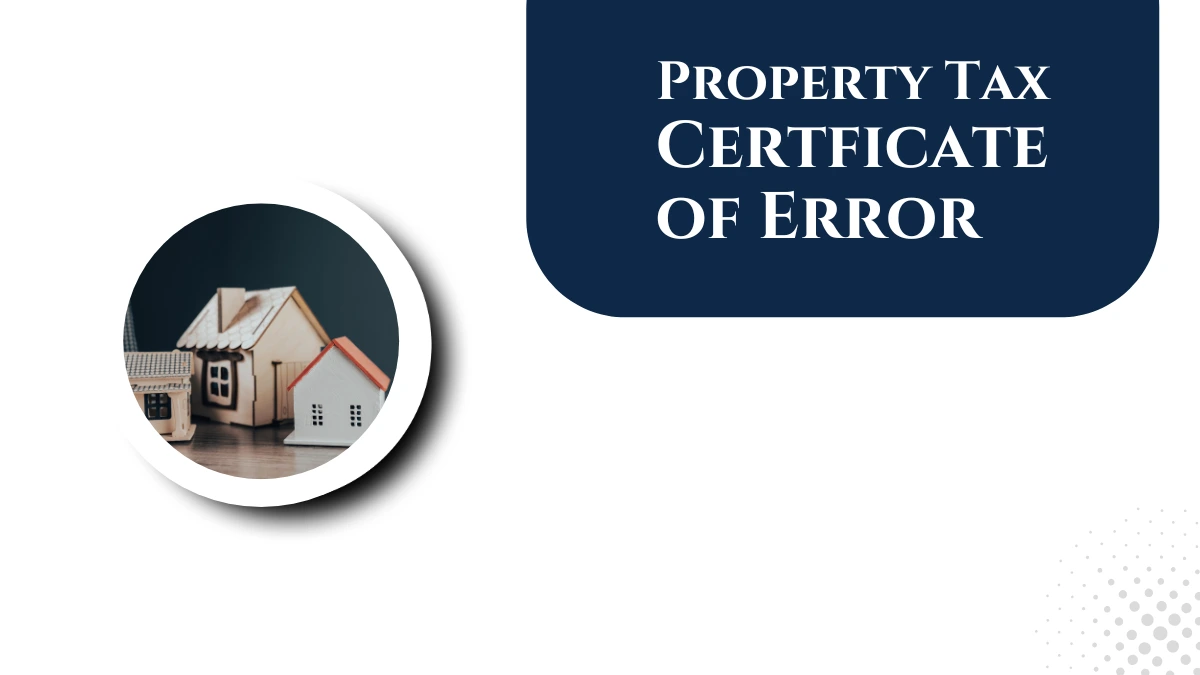What is a Property Tax Certificate of Error?
A Property Tax Certificate of Error is a formal mechanism that allows property owners to correct mistakes on their property tax bills after assessment for that tax year finalized.
This process is especially important when errors such as incorrect property valuations, missing exemptions, or clerical mistakes result in an overpayment or excessive tax burden.

Types of Errors that can be corrected
- Missing Exemptions: If you were eligible for a homestead, senior, or disability exemption but it was not applied, you can request a Certificate of Error for prior years.
- Assessment Errors: Mistakes in property valuation, such as incorrect square footage, duplicate assessments, or improvements that do not exist, and corrected.
- Mathematical Errors: Calculation mistakes on your tax bill can also addressed.
How to Fix a Property Tax Error with a Certificate of Error
1. Identify the Error
Review your property tax bills and assessment notices. Common issues include:
- Missing exemptions (homestead, senior, disability)
- Incorrect property details (size, number of rooms, improvements)
- Mathematical errors (wrong tax rate, calculation mistakes)
2. Gather Required Documentation
Prepare the following:
- Proof of ownership (deed, title)
- Proof of residency (photo ID, utility bill)
- Tax bills and assessment notices
- Any supporting documents (for exemptions, such as age or disability proof)
3. Complete the Certificate of Error Application
- Online or Paper Application: Most counties, like Cook County, Illinois, allow you to apply online or by mail for missing exemptions or assessment corrections.
- Year-Specific Applications: Each Certificate of Error application addresses a single tax year. If you need to correct multiple years, submit a separate application for each
- Special Forms: For certain exemptions (senior, disability, veterans), use the appropriate supplemental forms.
4. Submit and Track Your Application
- Submit: File your application with your local assessor’s office. Online submissions are often available for convenience
- Processing: The assessor’s office will review your application. If the property’s assessment was previously reviewed by a board of review, their approval may also required.
- Outcome: You will receive a letter indicating if your Certificate of Error granted or denied. If approved, your tax bill adjusted or you may receive a refund for overpaid taxes.
What happens after Submission?
- Adjustment or Refund: If your Certificate of Error approved, your property tax bill may corrected. If you already paid the incorrect amount, you may be eligible for a refund.
- Denial: If your application is denied, you will receive a reason code. You may have the option to appeal the decision.
Key Considerations:
- Time Limits: In some counties, you can only correct errors for the current or previous tax year. In others, like Cook County, you may be able to correct errors for up to three prior years.
- Exemptions: Always check if you qualify for additional exemptions, as these can significantly reduce your property tax liability.
- Legal Review: For non-residential properties or large reductions in assessed value, court review may be required.
Conclusion: A Property Tax Certificate of Error is a powerful tool for correcting mistakes on your property tax bill and claiming missed exemptions.
By understanding what a Property Tax Certificate of Error means and following the steps to identify, document, and submit your claim, you can ensure you pay only what you owe and potentially receive a refund for past over payments. Always check with your local assessor’s office for specific procedures and deadlines.
